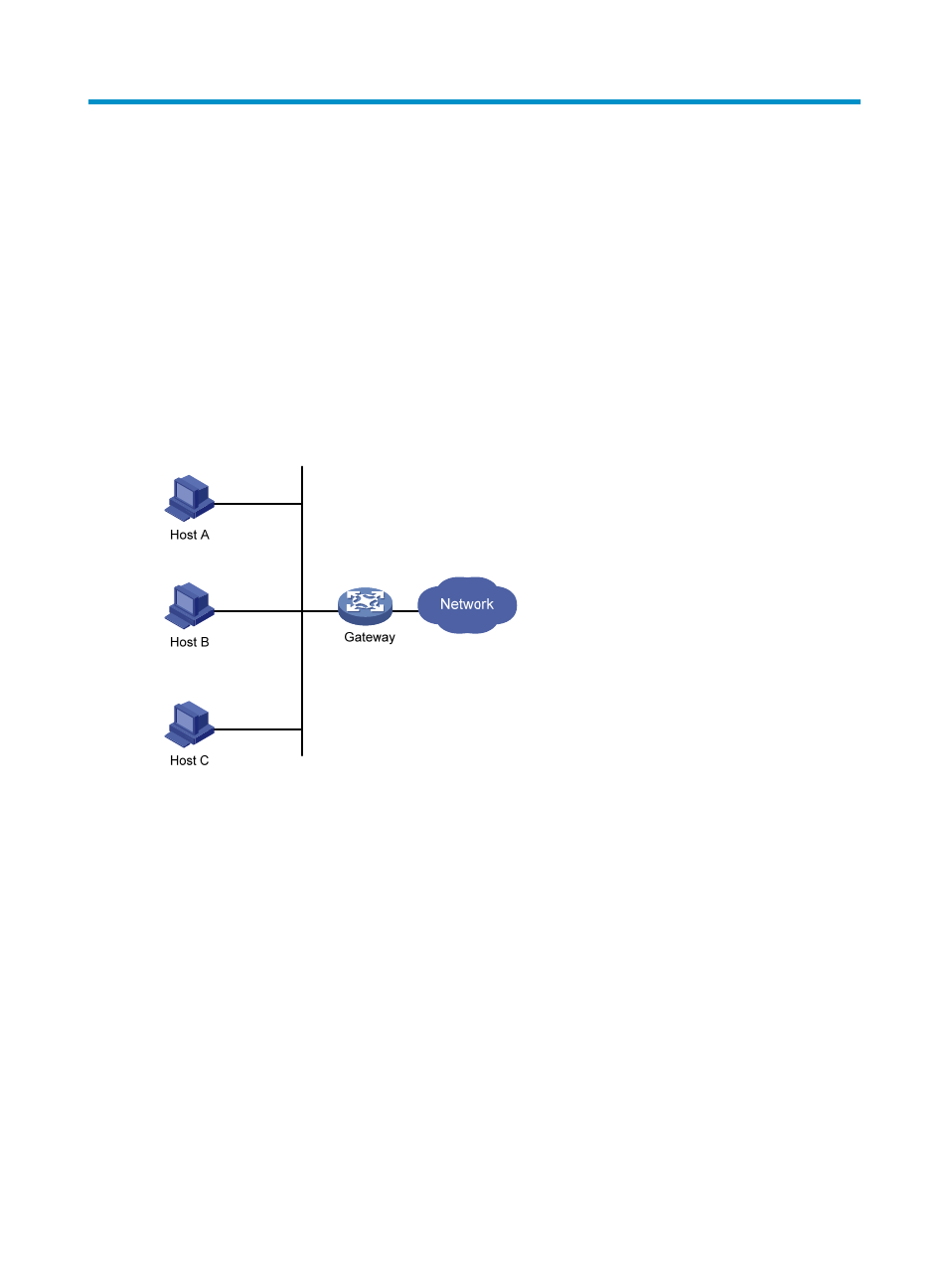Configuring vrrp, Vrrp overview – H3C Technologies H3C MSR 50 User Manual
Page 62

54
Configuring VRRP
The interfaces that VRRP involves can be only Layer 3 Ethernet interfaces and VLAN interfaces unless
otherwise specified.
VRRP overview
As shown in
, you can typically configure a default route with the gateway as the next hop for
every host on a LAN. All packets destined to other network segments are sent over the default route to the
gateway, which then forwards the packets. However, when the gateway fails, all the hosts that use the
gateway as the default next-hop router fail to communicate with external networks.
Figure 17 LAN networking
Configuring a default route for network hosts facilitates your configuration, but also requires high
performance stability of the device that acts as the gateway. Using more egress gateways is a common
way to improve system reliability, but introduces the problem of routing among the egresses.
Virtual Router Redundancy Protocol (VRRP) is designed to address this problem. VRRP adds a group of
routers that can act as network gateways to a VRRP group, which forms a virtual router. Routers in the
VRRP group elect a master through the VRRP election mechanism to act as a gateway, and hosts on a
LAN only need to configure the virtual router as their default network gateway.
VRRP is an error-tolerant protocol, which improves the network reliability and simplifies configurations on
hosts. On a multicast and broadcast LAN such as Ethernet, VRRP provides highly reliable default links
without configuration changes (such as dynamic routing protocols, route discovery protocols) when a
router fails, and prevent network interruption due to a single link failure.
VRRP operates in either of the following modes:
•
Standard mode—Includes VRRPv2 and VRRPv3. IPv4 VRRPv2 is defined in RFC 2338, IPv6 VRRPv2
is defined in RFC 3768, and IPv4/IPv6 VRRPv3 is defined in RFC 5798. For more information, see
